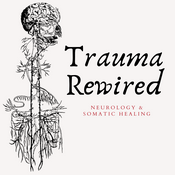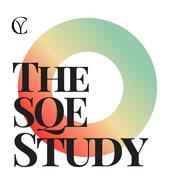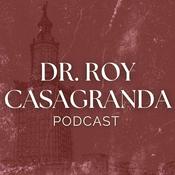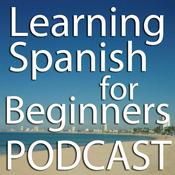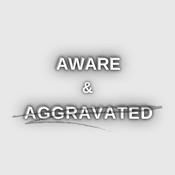188 episodes

Ep 187 – Quiz of the year 2025
18/12/2025 | 23 mins.
In this episode, Dr Hannah Rosa, Dr Kate Chesterman and Dr Roger Henderson invite you to join them for the annual GPnotebook quiz. The GPnotebook education team have been reflecting upon all that they have learnt over the past 12 months, in both their day-to-day clinical work and through delivering GPnotebook Study Group meetings. This quiz is based on the facts that they have found the most useful, interesting and sometimes surprising. So, have a pen and a piece of paper ready and give it a go!Access episode show notes containing key references and take-home points at:https://gpnotebook.com/en-GB//podcasts/general-information/ep-187-quiz-of-the-year-2025.Did you know? With GPnotebook Pro, you can earn CPD credits by tracking the podcast episodes you listen to. Learn more.

Ep 186 – Olecranon bursitis
11/12/2025 | 11 mins.
Olecranon bursitis is the inflammation of the bursa overlying the olecranon process, presenting as localised, fluctuating posterior elbow swelling that necessitates clinical differentiation between aseptic (traumatic, crystalline) and septic aetiologies for appropriate management. In this episode, Dr Kate Chesterman discusses the risk factors for olecranon bursitis as well as its diagnostic features. The differences in presentation between septic and non-septic cases are explored, and the management of both is reviewed. Also included are the criteria for secondary-care involvement and advice that we can pass on to patients to try to prevent recurrent episodes of this condition.Access episode show notes containing key references and take-home points at:https://gpnotebook.com/en-GB/podcasts/musculoskeletal-medicine/ep-186-olecranon-bursitis.Did you know? With GPnotebook Pro, you can earn CPD credits by tracking the podcast episodes you listen to. Learn more.

Ep 185 – Lung cancer
04/12/2025 | 14 mins.
Lung cancer is the leading cause of cancer-related death worldwide and is classified into two main types: non-small cell lung cancer (NSCLC), which accounts for most cases and the more aggressive small cell lung cancer (SCLC). Early detection is crucial for improving outcomes, but symptoms often emerge late in the disease course. In episode 126, Dr Hannah Rosa looked at the challenges of diagnosis, reviewed guidelines and latest research and discussed when to continue investigations after a normal chest X-ray. In this episode, Dr Roger Henderson gives an overview of detecting lung cancer in primary care and looks at treatment – including newer options for some late-stage cancers.Access episode show notes containing key references and take-home points at: https://gpnotebook.com/en-GB/podcasts/oncology/ep-185-lung-cancer.Did you know? With GPnotebook Pro, you can earn CPD credits by tracking the podcast episodes you listen to. Learn more.

Ep 184 – Parvovirus B19
27/11/2025 | 15 mins.
Parvovirus B19 (slapped cheek syndrome) is a common and usually mild, self-limiting viral illness. Certain populations, such as pregnant women and their unborn babies, those who are immunocompromised or those with underlying haematological conditions, are at increased risk of complications as the virus can affect red blood cell production. In this episode, Dr Kate Chesterman explores the common signs and symptoms in healthy individuals, as well as discussing the investigation and management of those at higher risk of complications.Access episode show notes containing key references and take-home points at: https://gpnotebook.com/en-GB/podcasts/infectious-disease/ep-184-parvovirus-b19.Did you know? With GPnotebook Pro, you can earn CPD credits by tracking the podcast episodes you listen to. Learn more.

Ep 183 – Post-traumatic stress disorder
20/11/2025 | 21 mins.
Post-traumatic stress disorder (PTSD) may develop (either immediately or delayed) following exposure to a stressful event or situation of an exceptionally threatening or catastrophic nature. It is characterised by four groups of symptoms: intrusion symptoms, avoidance, negative alterations in cognition and mood and alterations in arousal and reactivity. These symptoms must persist for more than 1 month and cause functional impairment for a diagnosis to be made. Its presentation is often comorbid with conditions such as depression, anxiety, anger and substance use disorder. In this episode, Dr Roger Henderson looks at the aetiology of PTSD, its assessment, treatment options and prognosis.Access episode show notes containing key references and take-home points at: https://gpnotebook.com/en-GB/podcasts/psychiatry/ep-183-post-traumatic-stress-disorder.Did you know? With GPnotebook Pro, you can earn CPD credits by tracking the podcast episodes you listen to. Learn more.
More Education podcasts
Trending Education podcasts
About GPnotebook Podcast
Listen to GPnotebook Podcast, The Mel Robbins Podcast and many other podcasts from around the world with the radio.net app

Get the free radio.net app
- Stations and podcasts to bookmark
- Stream via Wi-Fi or Bluetooth
- Supports Carplay & Android Auto
- Many other app features
Get the free radio.net app
- Stations and podcasts to bookmark
- Stream via Wi-Fi or Bluetooth
- Supports Carplay & Android Auto
- Many other app features


GPnotebook Podcast
download the app,
start listening.












